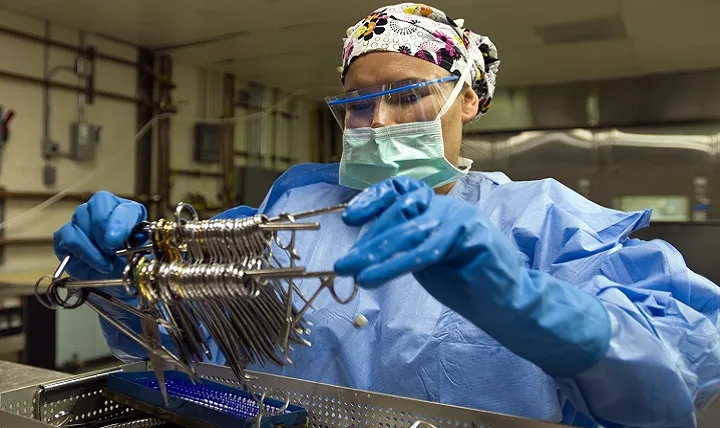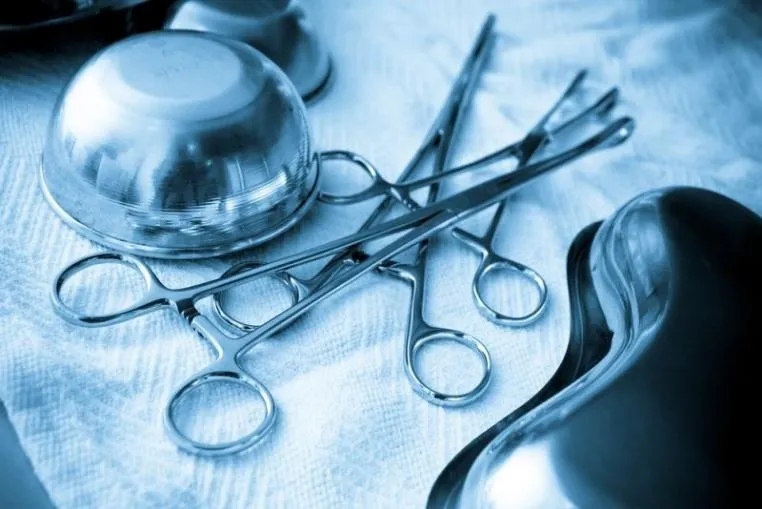If surgical instruments are not cleared of bio-burden (meaning detectable biological contamination from the previous case), disaster unfolds. If a patient is harmed by exposure to a poorly processed surgical instrument, it gets out in the press; the Joint Commission descends upon the institution and everything shuts down. The ship is no longer moving in rough seas.
Why this scenario doesn’t happen more often is mystifying. The national average for detectable bioburden after reprocessing is about 4%. To reassure you, during repossessing, residual bioburden has been exposed to steam at 20 atmospheres of pressure and sprayed with biocidal chemicals. And in most cases, it is not even visible to the naked eye. So, to be fair, such a low level of bioburden contamination may be of no risk to our patients.
On the other hand, when bone chunks are found on reprocessed orthopedic instruments, no amount of hand waving can or should reassure us. In this case, we know exactly what it means.

Recently I took a deep dive into the whole process around reprocessing surgical instruments and I came away dumb stuck about how hard the technicians work in this space and how dangerous it is. The average technician does mandatory overtime weekly and one weekend of overtime a month. They handle about 675 instruments an hour or almost 11 instrument/minute. Not surprisingly there is at least one puncture or stab injury per month.
So, let’s think about that. These technicians have to examine and clean one instrument, to the point where there is no visible bioburden, every 5 seconds. And some of these instruments are incredibly complex. For example, to reprocess all the instruments for a surgical robot takes one technician 4.5 hours! Now I will tell you our technicians are dedicated and the best of the best and their error rate is well under the national average, but they are killing themselves to achieve that.
During my tour of our repossessing space a little voice in the back of my head kept asking: what percentage of instruments undergoing reprocessing appear to be unused? By federal regulatory standards, any instrument that is opened in the operating room is considered contaminated whether you use it or not and thus, it must go through reprocessing. Not surprisingly, the technicians estimated that 60% to 70% of instruments come back from the OR unused.
Then I did a simple thing. I had my OR team track the percentage of unused instruments in my cases and the data was stunning.
On average, I use 14% of the instruments in my surgical pans. Which means all my partners who do the same operations as me likely use the same percent of instruments from their pans. When you consider that our service does 1200 cases/year and averages 90 instruments per pan and 1.5 pans per case. That’s 1,800,000 instruments that currently need to be reprocessed per year. But only 252,000 touch the patient. Other service lines are in my hospital are finding this out as well. Within these numbers a very simple solution emerges: we need to eliminate instruments we do not use from our surgical pans. Period!
If other services lines have similar utilization rates (14%-15%) as my service line, and I suspect they do, then the reduction of instruments in surgical pans will have a profound effect on reprocessing. Simply by eliminating unused instruments from pans, technicians would instead handle 94.5 instruments/ hour or one instrument every 38 seconds rather than one every five seconds. under these conditions, the bioburden error rate will plummet. The risk of technicians being injured while cleaning a sharp instrument will drop precipitously and mandatory overtime will go away.

This zero-cost approach will also save money over time because unused instruments will not be subjected to heat fatigue caused by 20 atmospheres of pressured steam in an autoclave. So, it will reduce amortization. The other downstream benefit is that if there are fewer instruments to gather and spay at the end of a case, you will spend less time turning over the OR. Which means less time to get the next patient into the room for the next case.
This approach improves quality and safety and reduces cost and waste. It is an Occam’s razor approach: the simplest and best answer. And it is an solution that arises when the captain (or in this case captains) takes a trip down to the engine room (repro) to help tune the ship.
